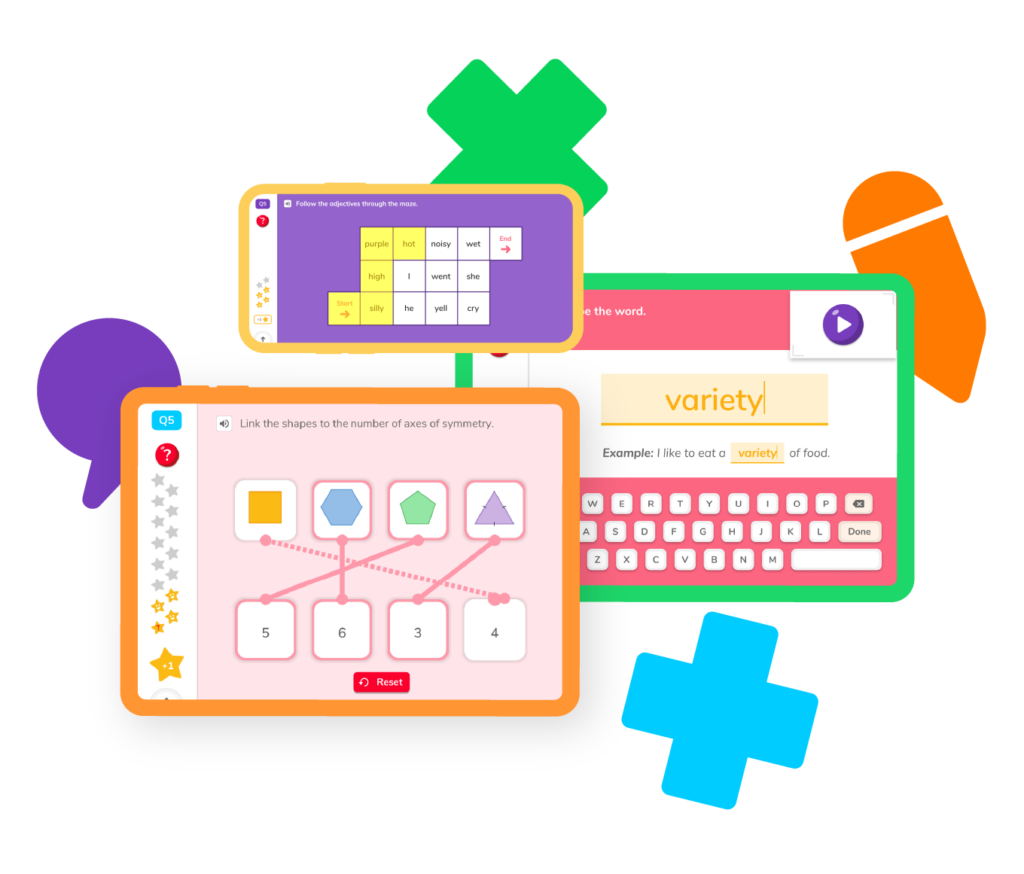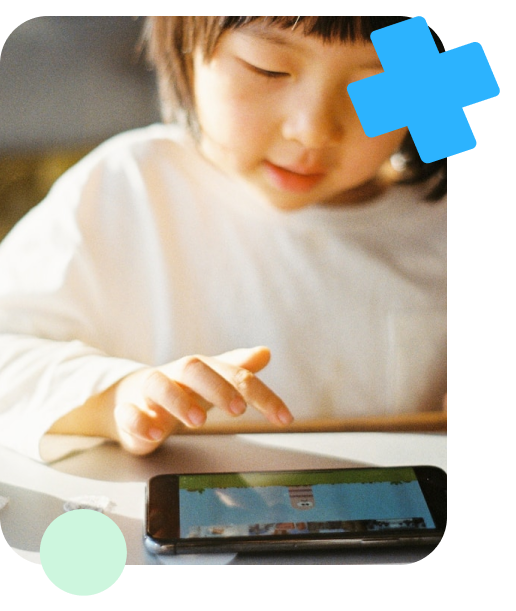Because the world is full of objects, the world is also full of geometry! Geometry in primary school teaches us how to identify different shapes, lines, and angles. It teaches us how to use different formulas to calculate the area, perimeter, and volume of shapes and objects, and most importantly how to apply those geometry maths concepts to real-world maths problems and scenarios.

Learning geometry is easy with the right tools. Join us in the DoodleLearning fun! Begin by choosing a geometry topic. You will discover a variety of geometry practice problems and learn some of the best tips and tricks from some of the very best teachers and tutors.
Learn characteristics of perpendicular lines and how to classify lines as being perpendicular.
Practise finding perimeters of shapes in geometry and apply this knowledge to real-world examples.
This article guides you through the steps to find the volume of a cube, rectangular prism, and other common shapes.
Learn to use a protractor to measure angles and how to identify acute and obtuse angles.
Discover the steps to calculate the area of any triangle, with practice problems included.
Learn characteristics of perpendicular lines and how to classify lines as being perpendicular.
Practise finding perimeters of shapes in Geometry and apply this knowledge to real-world examples.
This article guides you through the steps to find the volume of a cube, rectangular prism, and other common shapes.
Learn to use a protractor to measure angles and how to identify acute and obtuse angles.
Discover the steps to calculate the area of any triangle, with practice problems included.
There are three basic types of geometry: Euclidean, Elliptical, and Hyperbolic. There are other types of geometry, but because the other forms are considered a combination of these three, they are not usually included in the list of types of geometry.
Geometry is a maths skill used almost every day in our lives. Whenever we fill a glass of milk, or a jug of water, or a pool for summer, we calculate how much liquid volume that object can hold. That is us using geometry.
We also find the area of objects when trying to calculate how much paint will be needed to cover the area of a wall and when we calculate the perimeter when we want to put a fence around our gardens.
In other words, anytime we calculate a measurement of an object, or classify it based on it’s shape, we are applying the basic concepts of geometry.
Students begin learning geometry in KS1, when they are first introduced to shapes and their names. Children are taught to identify shapes based on their characteristics.
As your child advances to KS2, they will learn how to draw lines and angles and how to identify shapes by the number of sides. They will learn how to find measurements including area, perimeter, and volume, and will need to apply these skills to real-world problems.
When should I begin to introduce geometry concepts to my child?
You can begin introducing different types of geometry maths concepts to your child as early as Year 1. You can teach them to identify different shapes based on their features. For example, you can teach them that a triangle has three sides, but a rectangle has four. These are simple concepts that will get them familiar with geometry.
As your child advances to other grade levels, they will be taught additional geometry concepts that encompass a wide range of geometry topics including more advanced measurement calculations and more descriptive ways to identify objects. For now, begin with the basics.
The best way to supplement your child’s learning of geometry and its features is through maths practice. There are many resources online that provide geometry maths worksheets, games, and quizzes. The more your child is exposed to a variety of geometry practice problems, the more they will be comfortable solving real-world maths problems at home and in school.
Check out our maths app to see the many resources we have for students to practise maths skills including the geometry skills in this hub. It also includes a hub for parents to be able to track their child’s progress as they become skilled maths learners.
The geometry definition is simple: geometry is the branch in maths that applies spatial awareness to real-world maths problems. These problems include finding the area of objects, calculating the perimeter of different shapes, and identifying lines, vertices, and angles.
You learn geometry beginning in Year 1. Although the concepts become more complex, it is still categorized as geometry when you learn about shapes, measurements, lines, and angles.
As your child advances to different year groups, their understanding of geometry maths concepts is broadened. If your child stays on track, these more challenging concepts can easily be learned and practised.
The three types of Geometry are the Euclidean, Elliptical, and Hyperbolic. Although later forms of geometry have been added, they are all based on the combination of these three basic types. What is more important than knowing the names of geometry, is knowing how to apply its concepts. Through much practise, your child can and will succeed.


Parents, sign up for a DoodleMaths subscription and see your child become a maths wizard!

Book a chat with our team
If you’d like to use Doodle’s browser version, please visit this page on a desktop.
To log in to Doodle on this device, you can do so through our apps. You can find out how to download them here: